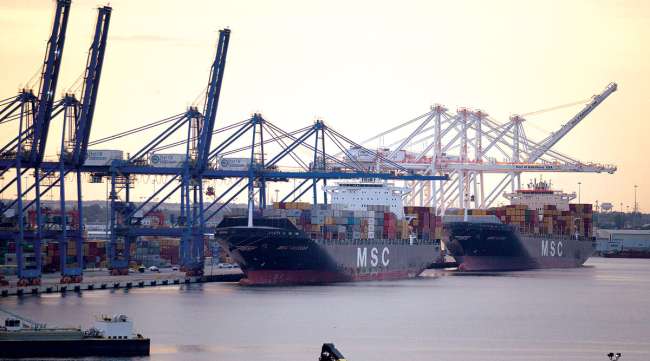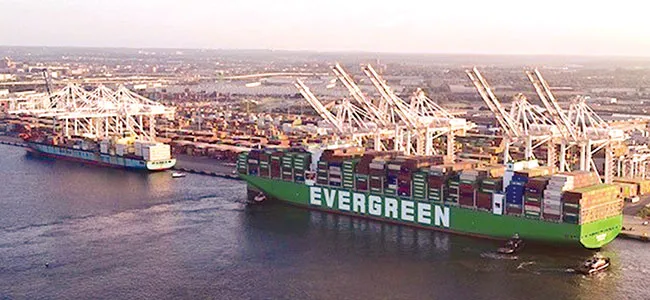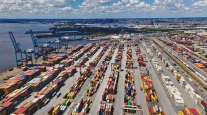Staff Reporter
Port of Baltimore’s Public Marine Terminals Set Cargo Record

[Stay on top of transportation news: Get TTNews in your inbox.]
The Port of Baltimore’s state-owned public marine terminals have surpassed a cargo volume record reached in 2019 before the pandemic by handling 11.6 million tons of general cargo during fiscal 2023.
“The Port of Baltimore continues to show its strength as an economic engine and continues to show why Maryland’s reputation for outstanding workers and a tremendous business climate is so well founded,” Gov. Wes Moore remarked Sept. 27. “This impressive milestone is a testament to the people who make up our longshore labor force and to our partners in the maritime industry.”
Until the June 30 end of fiscal 2023, the highest cargo volume handled at the port’s public marine terminals was 11 million tons during the 2019 fiscal year.
“Maryland’s port, combined with our rail, tunnel, bridge and highway network, can deliver to markets up and down the East Coast and deep into the Midwest,” noted Paul Wiedefeld, state transportation secretary. “With our tremendous team, incredible infrastructure and outstanding logistics, the Port of Baltimore is showing the world how to bring goods to market safely, reliably and with the highest customer service.”

Wiedefeld
According to the Maryland State Freight Plan issued in November, the Port of Baltimore has seven state-owned marine terminals along with many privately owned terminals.
“It is a vital link for raw materials and manufactured goods moving into and out of Maryland, the mid-Atlantic region, and into the Midwest United States,” the plan says. “The Port of Baltimore ranks at or near the top of all U.S. ports in several categories, including handling farm and construction machinery, automobiles, imported forest products, imported sugar, imported gypsum and exported coal.”
The port continues to demonstrate strong performance this calendar year across several categories and key commodities. So far, roll-on/roll-off farm and construction machinery coming through the port is 28% higher, container volumes have risen by 7% and general cargo is up 5% compared to the same time in 2022.
In mid-August, the Port of Baltimore welcomed the largest containership to visit the state when the Evergreen Ever Max (longer than four football fields at 1,200 feet) arrived at Seagirt Marine Terminal. The vessel weighs 165,350 tons and can handle 15,432 20-foot-equivalent units. The port can accommodate such massive containerships because of its infrastructure that includes a 50-foot-deep channel and huge cranes for servicing large ships.

The Evergreen Ever Max docks at the Port of Baltimore's Seagirt Marine Terminal in mid-August. (Port of Baltimore via Facebook)
At the time, Brian Miller, port interim acting executive director, said such large ships can sail into the Port of Baltimore because of the hard work of everyone in the supply chain. “From our great International Longshoremen's Association to our incredible truckers, pilots, tugs, freight forwarders, terminal operators and private marine terminals, the Port of Baltimore succeeds because we all pull in the same direction,” Miller said.
Want more news? Listen to today's daily briefing below or go here for more info:




